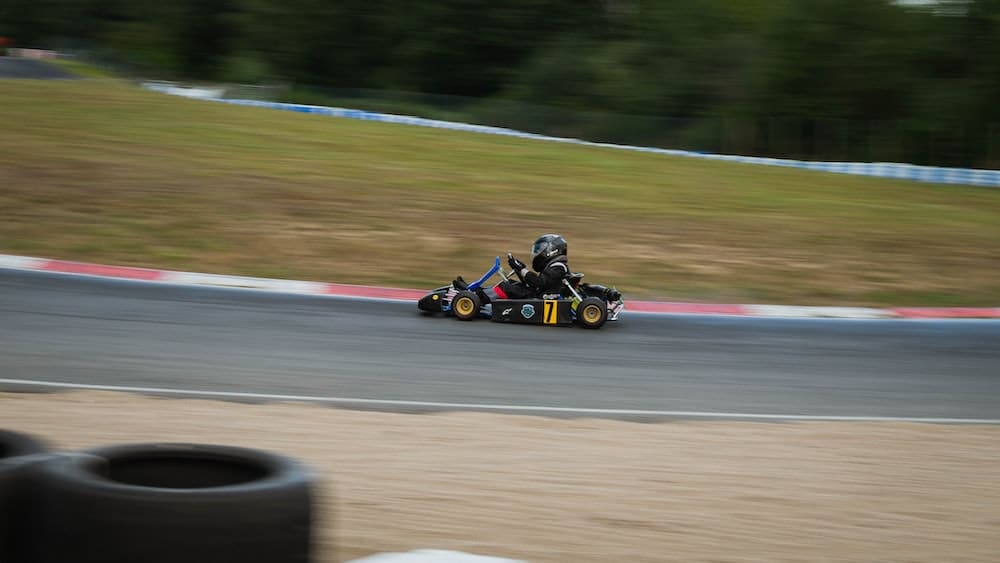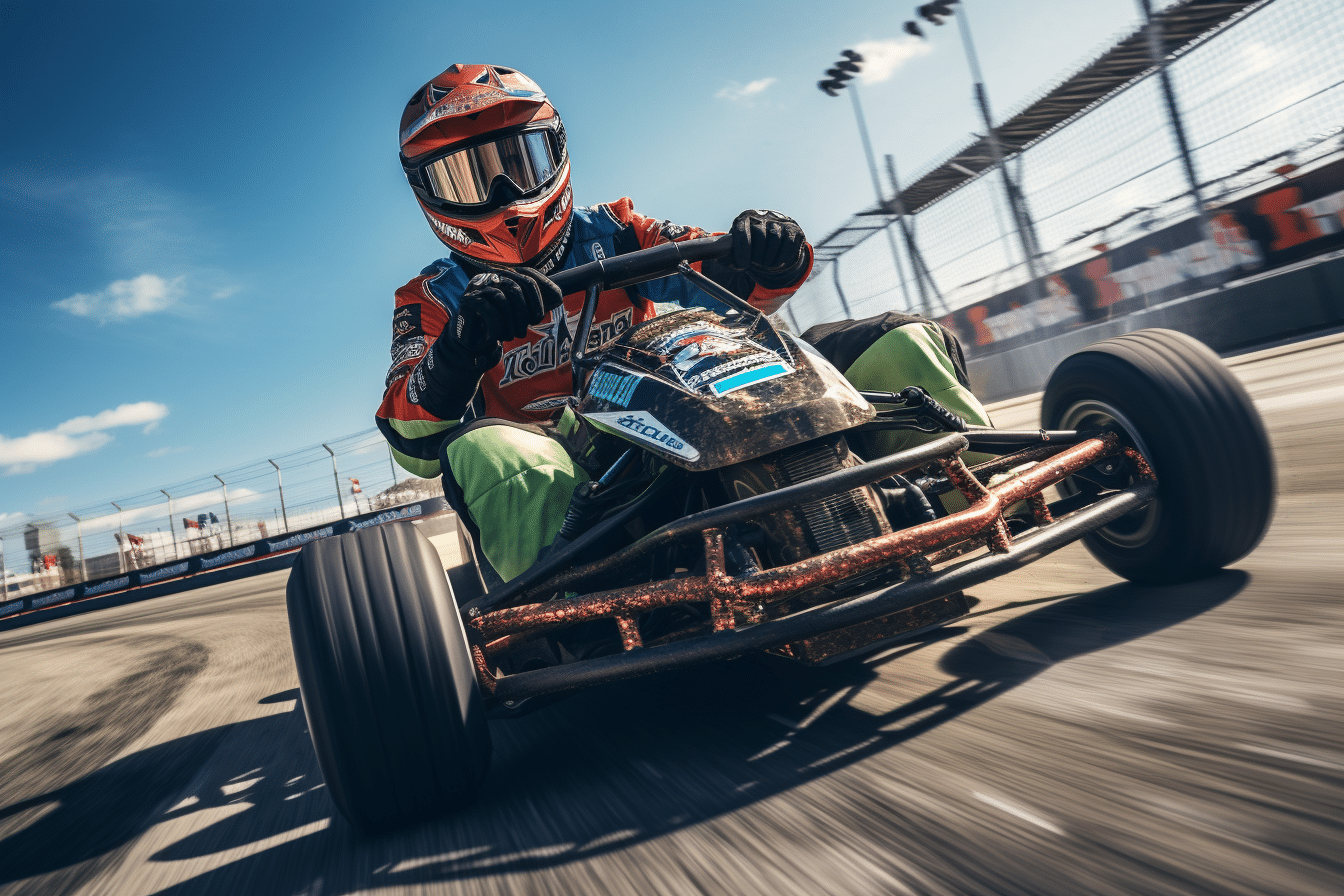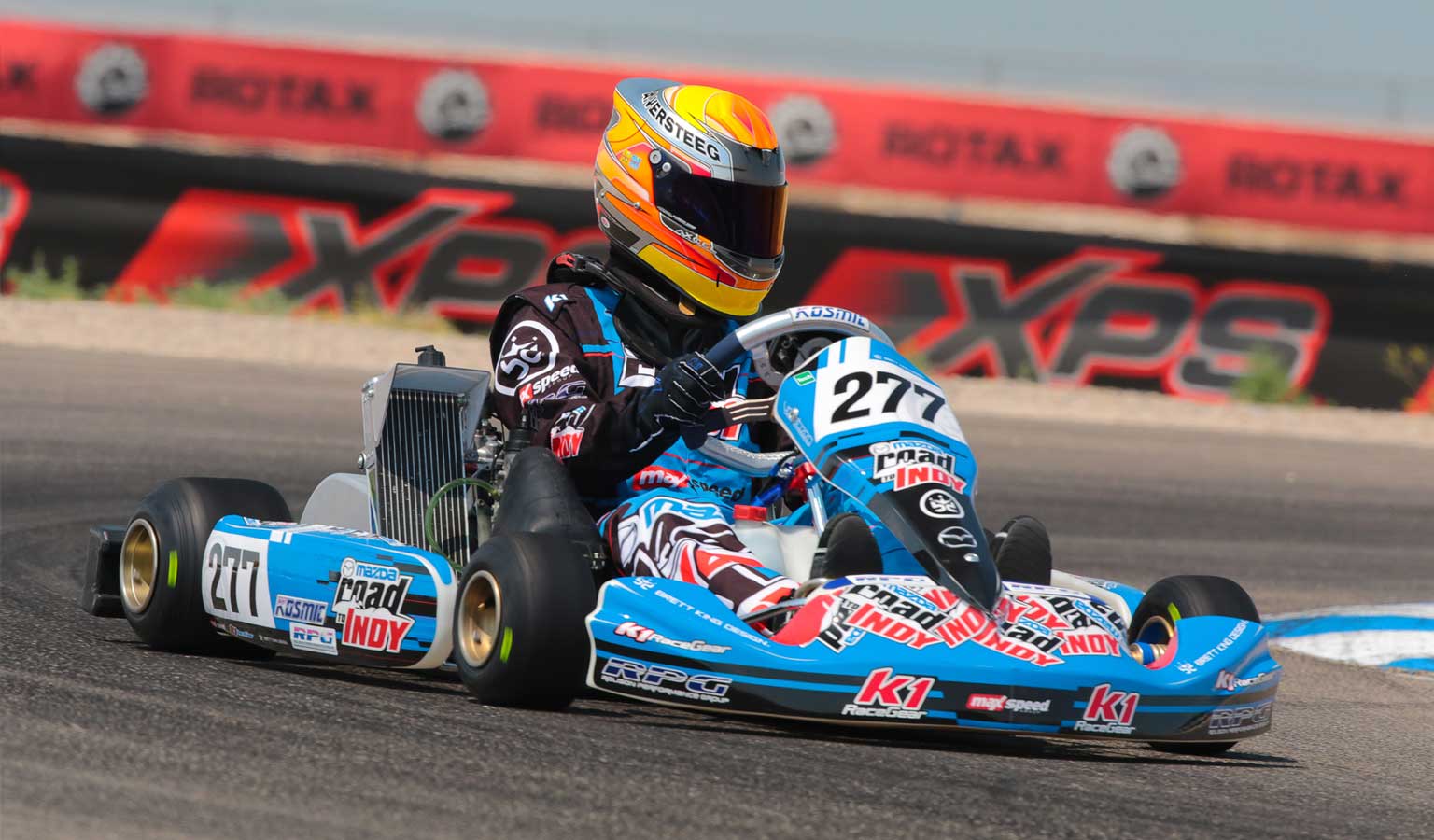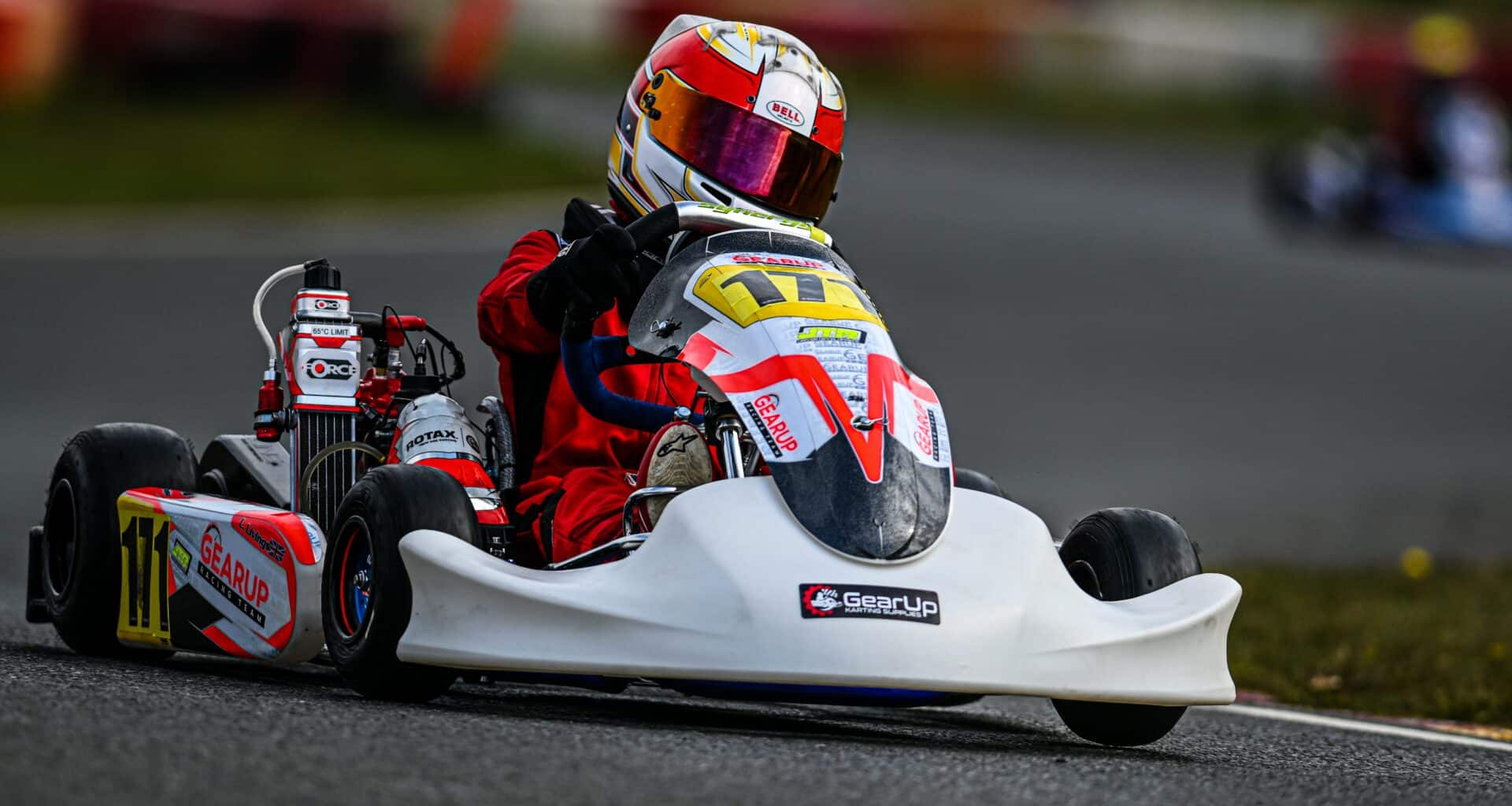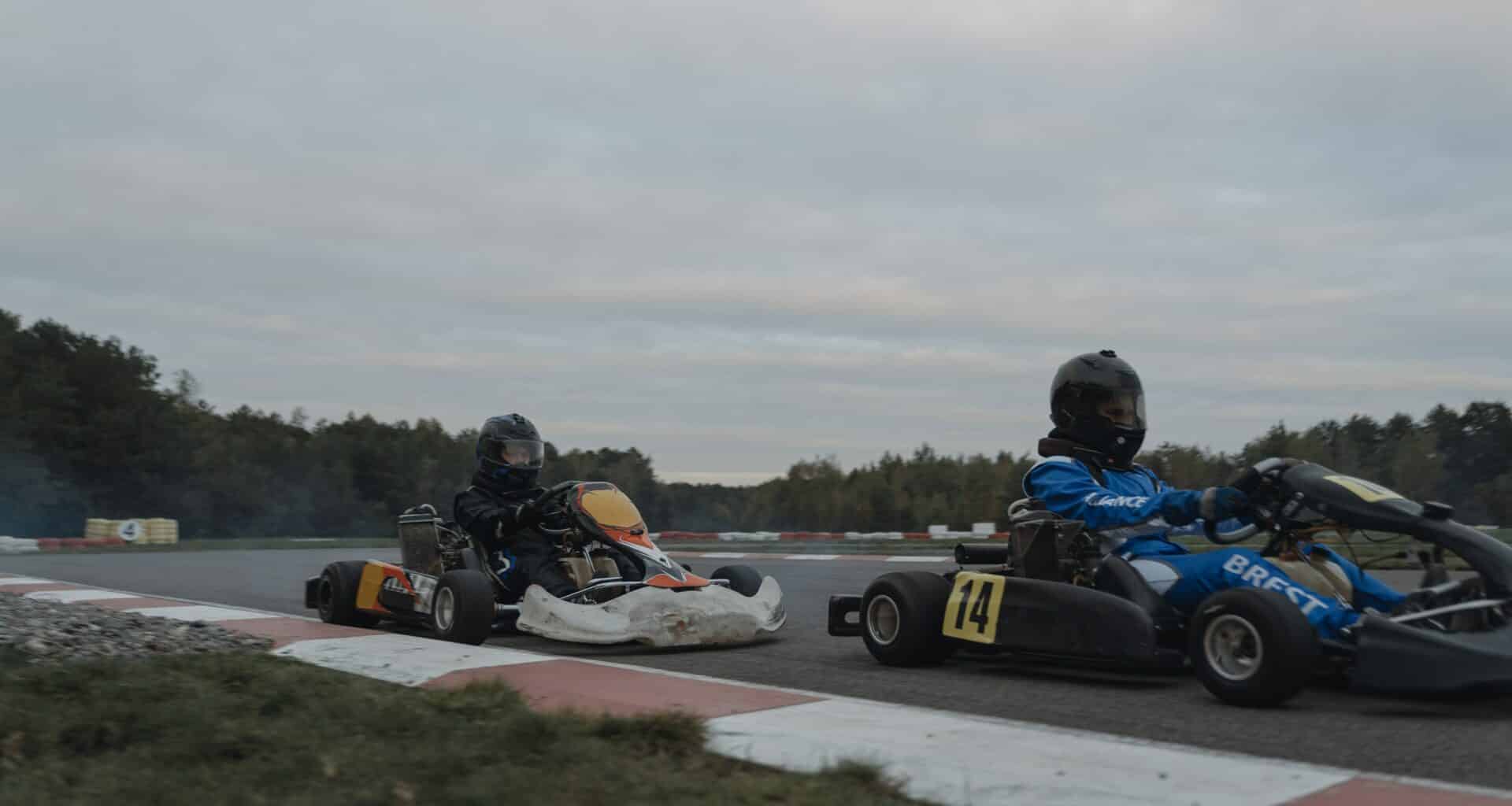Karting, also known as go-karting, is a popular motorsport that involves racing small open-wheeled vehicles called karts on purpose-built tracks.
Though karts lack sophisticated controls and protective bodywork, they can reach speeds exceeding 160 km/h on some tracks. This adventurous sport attracts enthusiasts across various age groups looking for an adrenaline rush.
However, the high-speed open nature of karting raises obvious safety concerns. Questions like “Is karting dangerous?” or “How safe is go-karting?” are frequently asked, especially by first-timers. Let’s try to find answers to these pertinent questions in this blog.
Table of Contents
- 1 Highlighting the Dangers in Karting
- 2 Is Karting Safe Compared to Other Motorsports?
- 3 Most Common preventive Measures for Potentially Dangerous Situations in Karting
- 4 Analyzing the Safety Aspects of Karting for Kids
- 5 Safety Training and Education for Karting Enthusiasts
- 6 A Peek into the World of Professional Karting and Its Dangers
- 7 Understanding the Adventurous World of Karting
- 8 Is Karting Really Dangerous?
- 9 Understanding Risk and Reward in Karting
Highlighting the Dangers in Karting
Common Accidents and Injuries in Karting
Though karting is motorsport, its perceived dangers are often underestimated. Karts can reach considerable speeds given their small exposed structure. Loss of control can result in karts overturning or colliding at high speed with barriers or other karts.
According to a 2002 study, the most common karting injuries are fractures (31%), lacerations and abrasions (25%), and sprains and strains (22%). Fractures occur frequently in the upper limbs and are usually minor. However, some vertebral fractures leading to paralysis are also on record.
Head injuries are surprisingly low at just 2% as helmets are mandatory. However, concussions and traumatic brain injuries can happen in extreme accidents. Non-life threatening internal organ injuries occur occasionally when drivers impact steering wheels or side-pods in crashes.
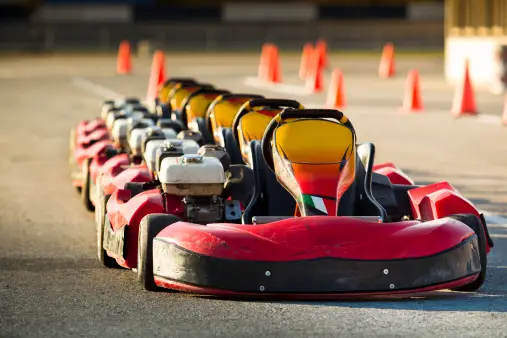
Karting Equipment and Safety Risks
The kart’s open structure leaves the driver exposed to certain equipment hazards as well:
- Rotating axles and sprockets can grab loose clothing, shoes laces, long hair, etc. leading to injuries
- Improperly secured components like nuts, bolts, master cylinders, etc. may fly off, especially at high RPM
- Overlooked damages to equipment like bent axles, worn bearings and tie rods can lead to accidents
- Faulty brakes, catch tanks, fuel lines and electrical wiring can put drivers in dangerous situations
Theseunderline the need for careful pre-race inspections and extra safety wiring in karts used in high stress competitive racing.
Is Karting Safe Compared to Other Motorsports?
Karting is certainly safer than most high speed professional motorsports like Formula One, sports car endurance racing, etc. The absence of sophisticated suspension systems and enclosed cockpits eliminates many risks associated with those disciplines.
However, karting has similar inherent risks to motorcycle racing with high cornering speeds, lack of crash protection and close pack racing. But karting may have lower consequences of accidents as speeds and kinetic energy involved are comparatively lower than motorsports involving larger vehicles.
Most Common preventive Measures for Potentially Dangerous Situations in Karting
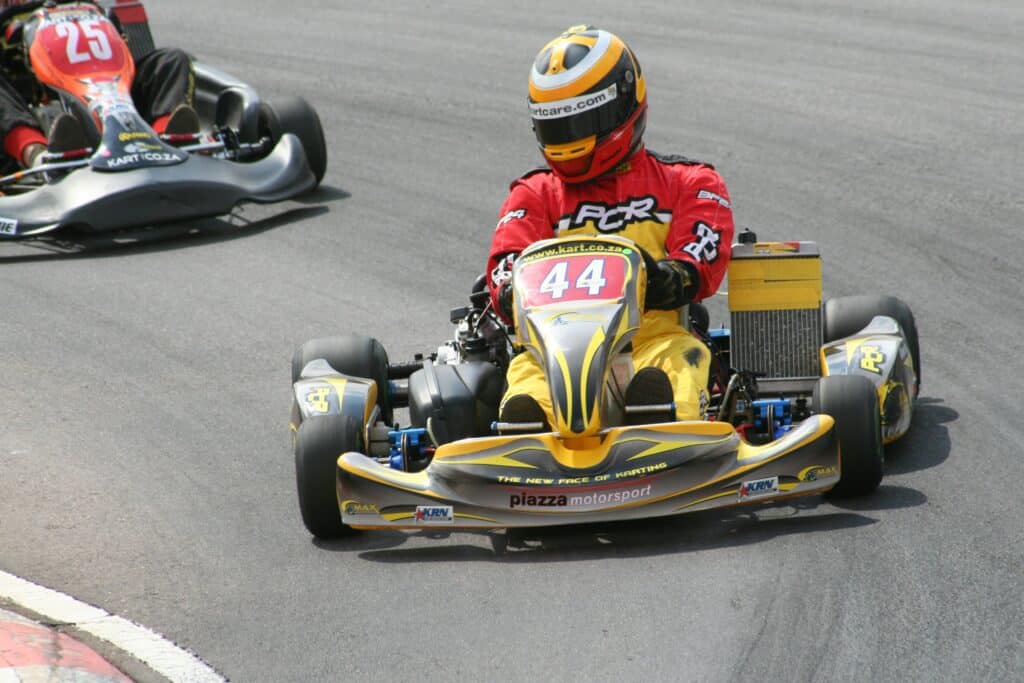
Importance of Safety Equipment in Karting
Safety equipment mandated or recommended for karting includes:
- Helmet – The most crucial piece of safety gear protecting the head in accidents
- Race suit – Made of fire resistant material, it prevents abrasions and minor burns
- Gloves – For protection from abrasions and avoiding blisters from hard steering
- Shoes – Lightweight shoes with thin soles for pedal feel and avoiding entanglement
- Rib protector (optional) – Extra padding to protect torso from repetitive micro-impacts
Safety gear needs to be correctly fitted and worn at all times by drivers on track. Regular inspection and replacement of damaged equipment is also critical.
Golden Rules of Karting
Beyond personal gear, following safe driving practices and track discipline is vital:
- Listen to pre-race safety briefings carefully
- Respect flags, track limits and racing etiquette
- Allow faster karts to overtake safely
- Avoid blocking or dangerous defensive tactics
- No contact or bumping of karts intentionally
- Stay focused, no reckless driving under emotions
- Inspect kart thoroughly before driving each session
- Report any issues immediately to track staff
- Don’t overlook pain or discomfort, take breaks if required
Analyzing the Safety Aspects of Karting for Kids
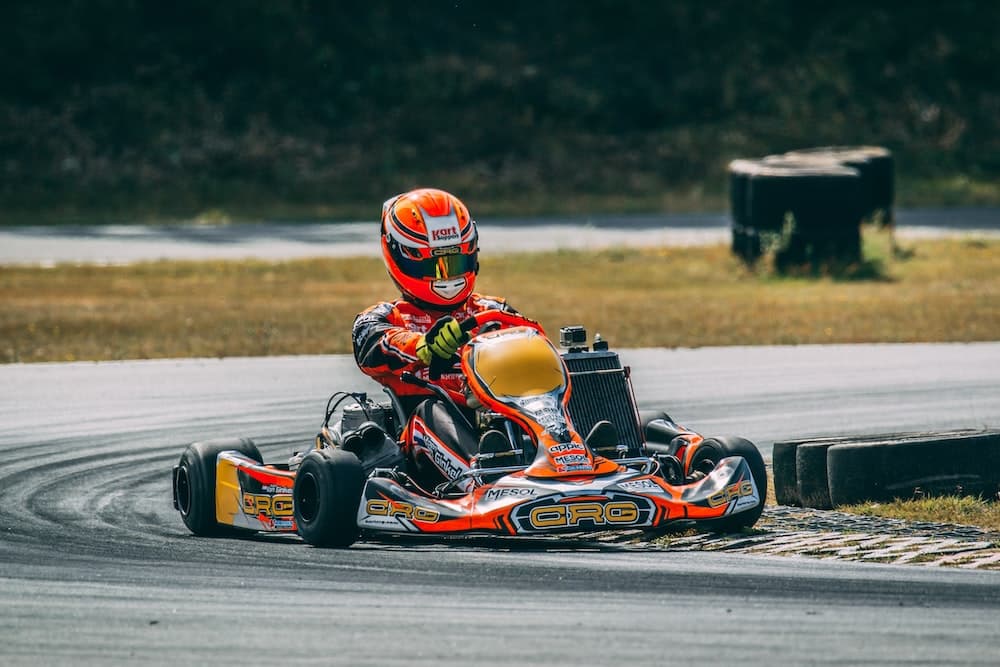
Considerations for Kids in Karting
Karting can be a fun family activity for kids too but needs careful safety considerations:
- Start kids slowly with proper training under supervision
- Use slower electric or pedal karts initially
- Don’t allow young kids in karts with adults or much older kids
- Ensure kids wear all required safety gear
- Prefer controlled speeds at separate kids tracks or events
- No passenger rides with kids driving karts
With adequate precautions, karting can be a safe hobby for kids to learn racing skills and discipline.
How Young is Too Young for Karting?
Most karting sanctioning bodies only allow racers aged 5 and above to compete. However, kids as young as 3 can start training slowly under parental watch at kids karting tracks using gearbox based electric karts limited to slow speeds (~10 km/h).
Kids aged 5-7 can graduate to faster non-gearbox electric karts on smaller tracks, still under supervision. Pedal karts are another popular option in this age group to learn kart control fundamentals.
Only over the age of 8 should kids start recreationally karting at faster speeds comparable to adults, wearing full safety gear.
Safety Training and Education for Karting Enthusiasts
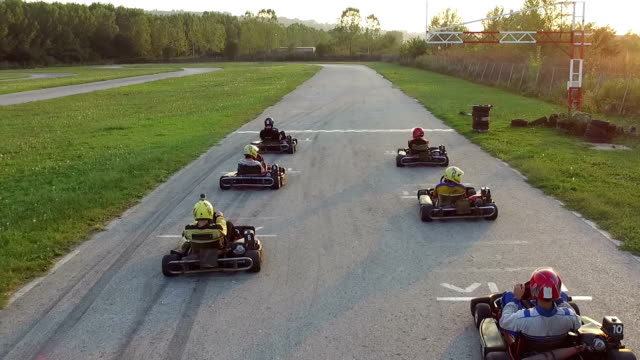
Role of Proper Training in Avoiding Karting Dangers
Lack of driving experience and training is a major factor in karting accidents. Proper training teaches critical lessons:
- Smoothly controlling karts at varying speeds
- Masteringbraking points, racing lines and cornering techniques
- Maintaining focus and avoiding distractions
- Adapting to different track conditions and kart setups
- Building physical endurance for long F1 race stints
- Recovering safely from spins or off-track excursions
Even experienced karters should train regularly and learn new tracks before racing on them. Periodic training camps refreshing fundamentals are also recommended.
Importance of Safety Briefings
Every karting event starts with short safety briefing by the race director highlighting:
- Specific risks and trouble spots on that track
- Any changes in track conditions to adapt to
- Unique procedures that may apply for that event
- Safety car procedures and flag signalling rules
Drivers must pay full attention to these briefings instead of treating them casually even with experience.
A Peek into the World of Professional Karting and Its Dangers
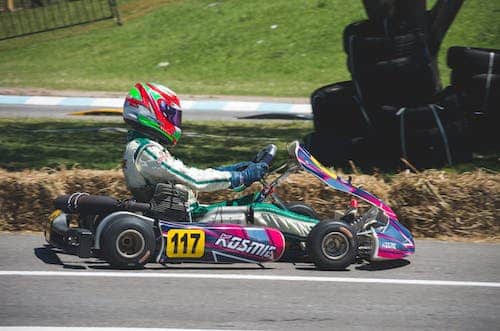
A Case Study of Professional Karting Accidents
While recreational karting is relatively safe with speed restrictions, professional karting pushes boundaries further. Top karts exceed 280 km/h aided by aerodynamics. Racing happens in packed grids of up to 30+ karts often within centimeters of each other.
These extreme race craft requirements contribute to some major accidents:
- In 2015, a crash in the KZ World Championship involved 10+ karts tearing through catch fencing at 250 km/h. Luckily only minor injuries resulted.
- Billy Monger, a British racer, had an horrific crash during a Formula 4 race in 2017 leading to amputation of both his legs. This underscored the vulnerability of open wheel racers.
- Henry Surtees, son of F1 legend John Surtees, was killed in 2009 when a stray kart wheel hit his head in an F2 race resulting in skull fracture and brain trauma.
Such sobering examples highlight the relentless pursuit of speed and competition in professional karting. Safety standards struggle to keep pace requiring constant evolution.
Understanding the Adventurous World of Karting
Brief History of Karting
The origins of karting can be traced back to California in the 1950s when enthusiasts started modifying small off-road vehicles to race against each other for fun on improvised tracks. The sport quickly spread across the US and other countries as it provided cheap thrills of racing without the complexity and expenses of motorsports involving full-sized vehicles.
The first kart manufacturer, Go Kart Manufacturing Co., was established in 1959. Karting’s governing body, the International Kart Federation, was also formed in the same year. Over the next few decades, karting evolved with improvements in chassis designs, tire technology, and engine performance.
Today, karting has professional championships organized by the Federation Internationale de l’Automobile (FIA), as well as the International Karting Federation. At the same time, it remains a popular amateur hobby with recreational karting tracks available in most countries.
The Fundamentals of Karting Racing
A kart is a small four-wheeled vehicle without suspension and a fully exposed chassis. The driver sits very close to the ground in a reclined position. Most karts are powered by small high-revving engines, either 2-stroke or 4-stroke. Karts rely on wide slick tires for grip and have direct steering with no assistance system.
Karts are raced on closed circuits ranging from 300 meters to over a kilometer in length. Track surfaces are usually asphalt or concrete, but some dirt and indoor tracks also exist. Karting events are organized into classes based on factors like driver age, kart engine size, chassis type, etc.
Karting demands precise driving skills, quick reflexes and upper body strength to handle the physical steering and grip changes through corners. Racers require endurance training as races last 10-30 minutes exerting high g-forces on the neck and torso.
Is Karting Really Dangerous?

There is no black and white answer to whether karting is dangerous or not. As with any motorsport, inherent risks cannot be eliminated in the quest for speed and excitement. But karting has proven to be a relatively safe form of racing for amateurs and professionals alike over decades.
Most karting injuries are limited to minor sprains, strains and bone fractures. Serious trauma and fatalities are rare exceptions usually stemming from extreme accidents, disregard for safety and inexperience.
Prudent safety measures and responsible driving practices can minimize the risks making karting action-packed fun for all age groups. Ultimately, thrill seekers need to understand that the rewards of karting come with associated risks taken in controlled environments.
Understanding Risk and Reward in Karting
Karting lets racing enthusiasts experience intense speed and competition in some of the most agile, raw and exposed racing machines out there. But this very openness and lack of aids makes it inherently risky compared to other motorsports.
With knowledge, precautions and discipline, karting can be enjoyed relatively safely. Yet there remains an element of risk which adds to its appeal. Finding the right balance and maturity is key for longtime karting enjoyment.
Racers must approach it with respect, self-preservation instincts and gradual progression. Stretching limits is inevitable and required, but not at the cost of safety and security. Both seasoned racers and newcomers would do well to remember this tricky but rewarding equilibrium allowing karting to thrive as the bustling grassroots of motorsports worldwide.
